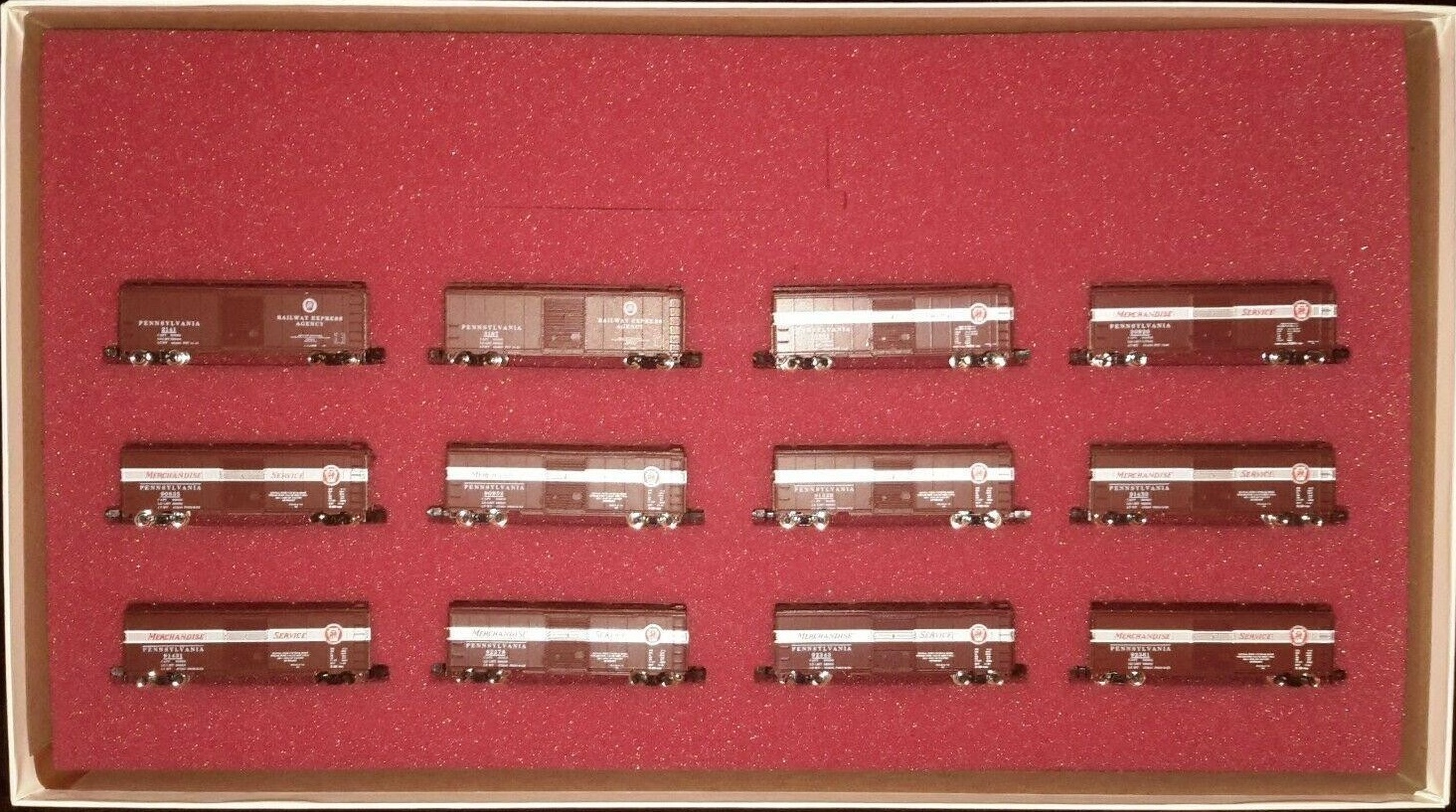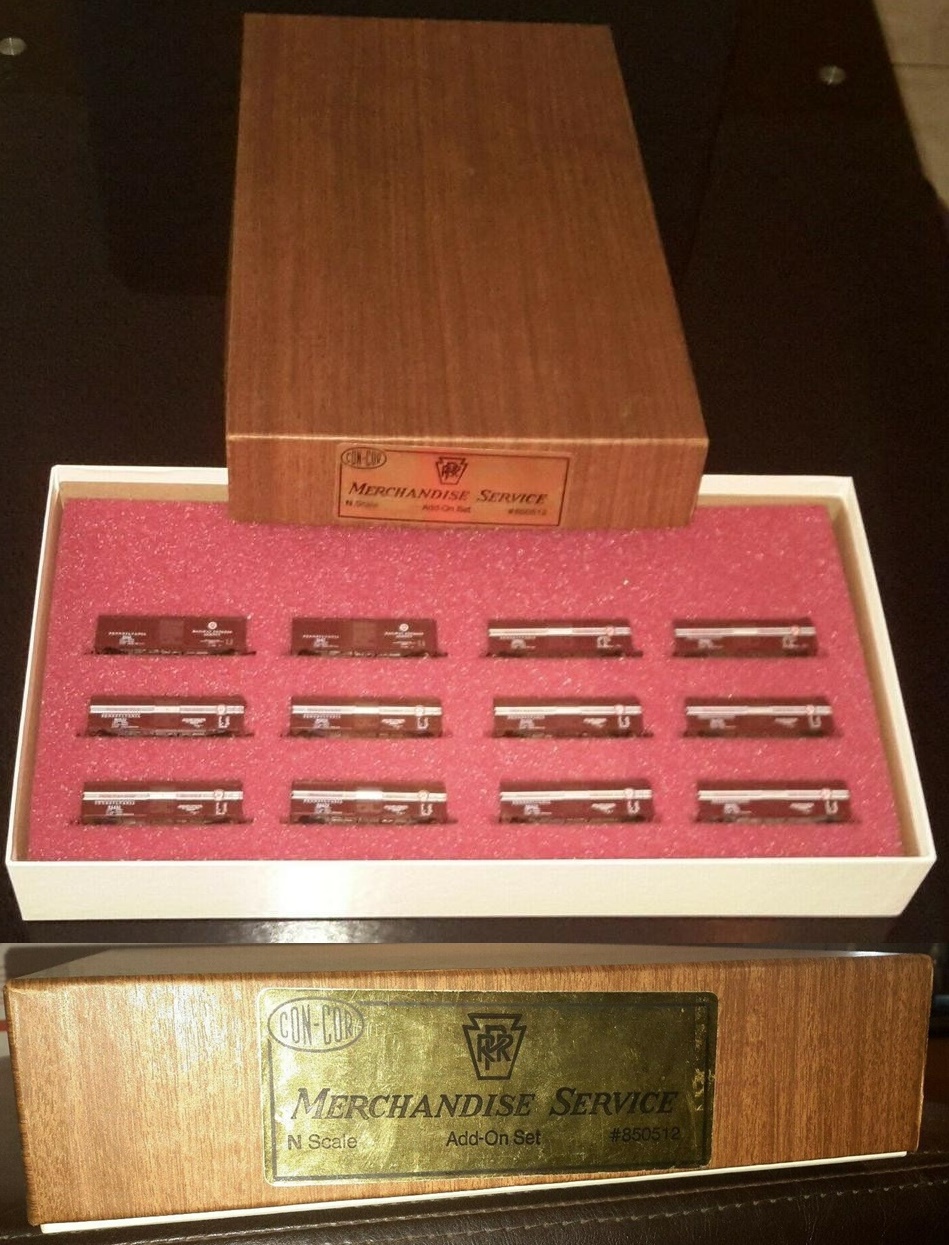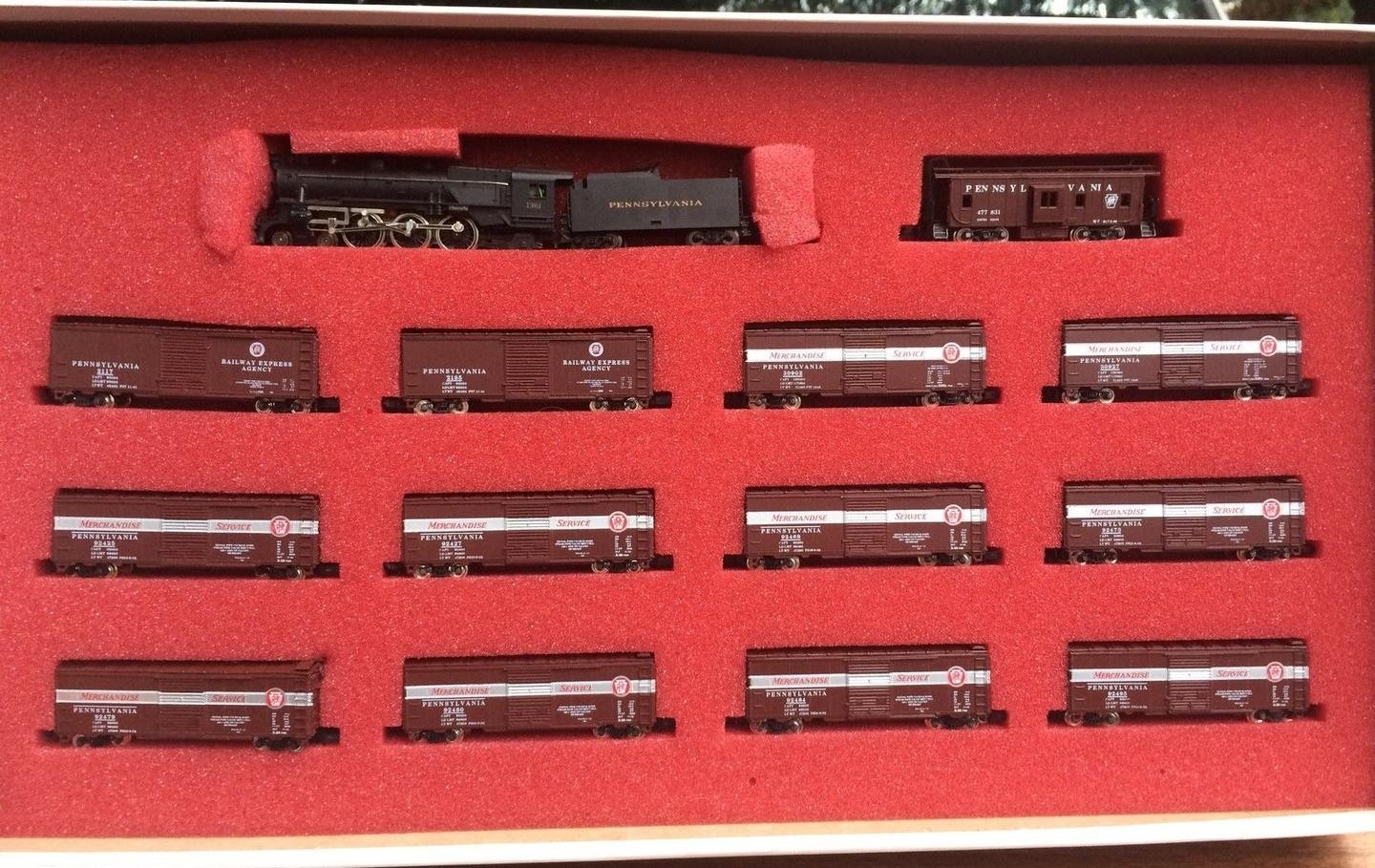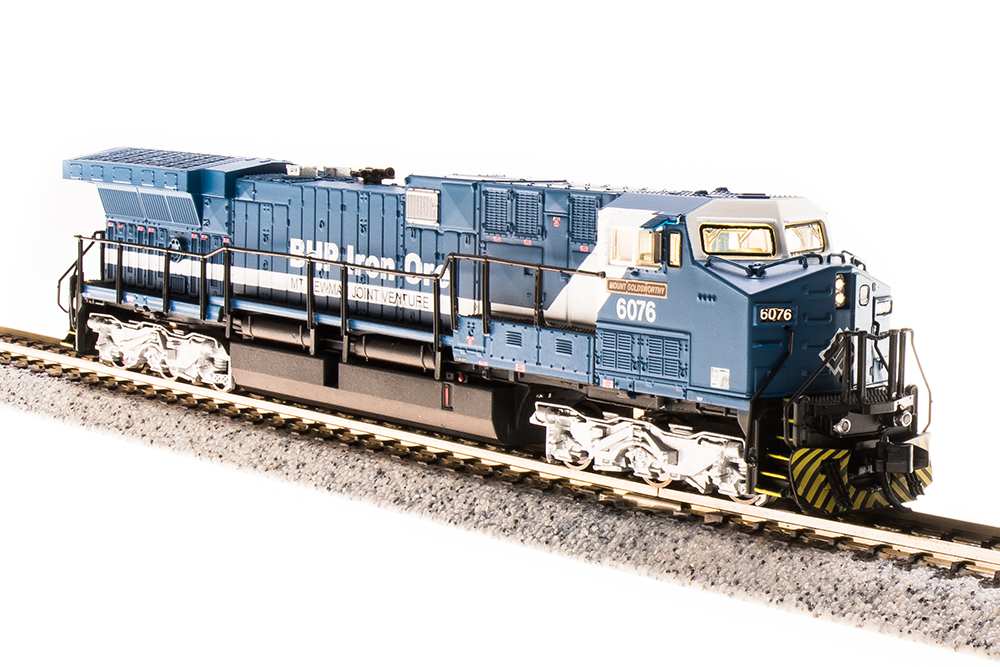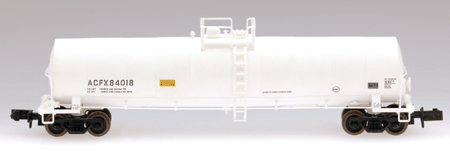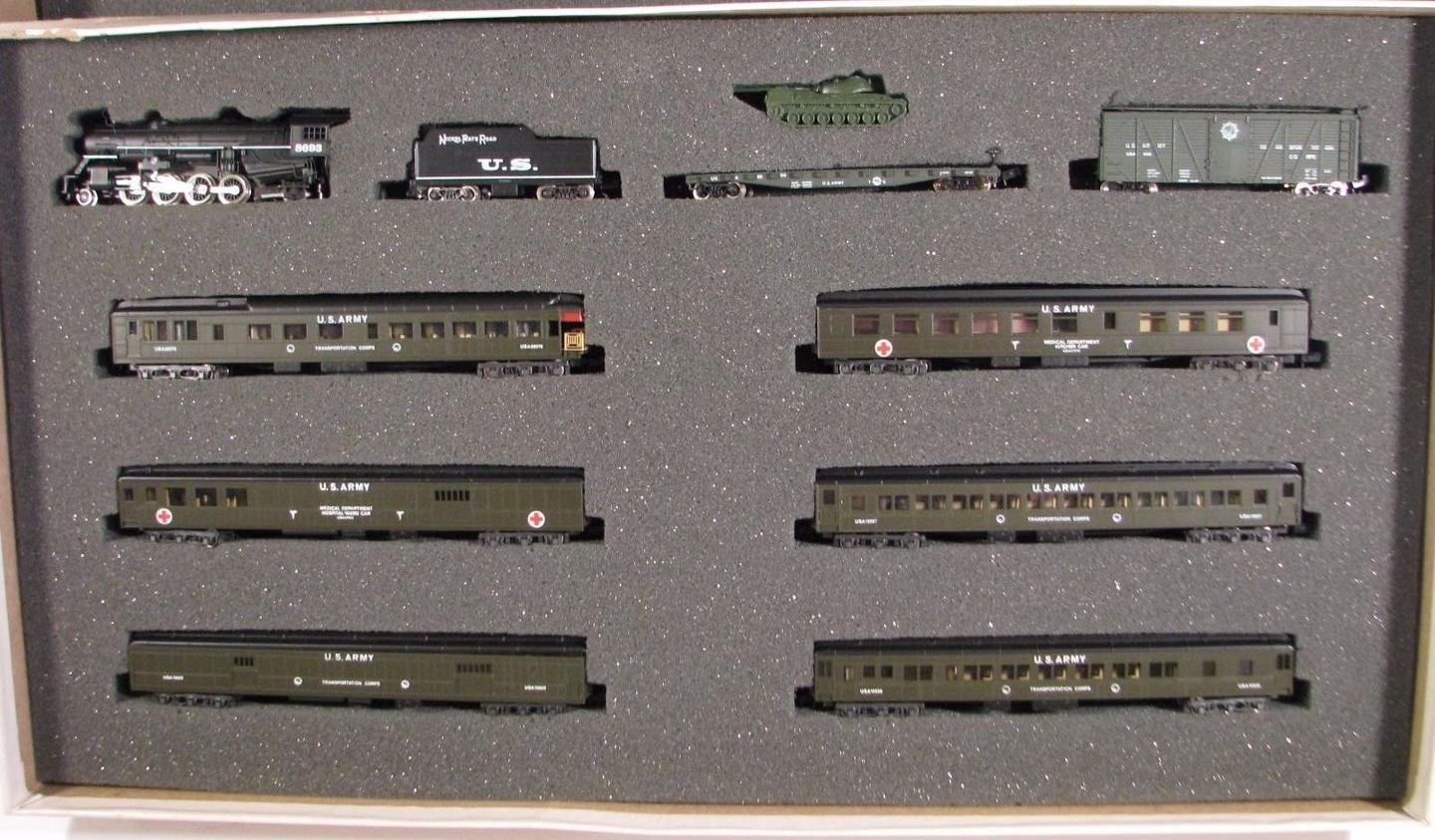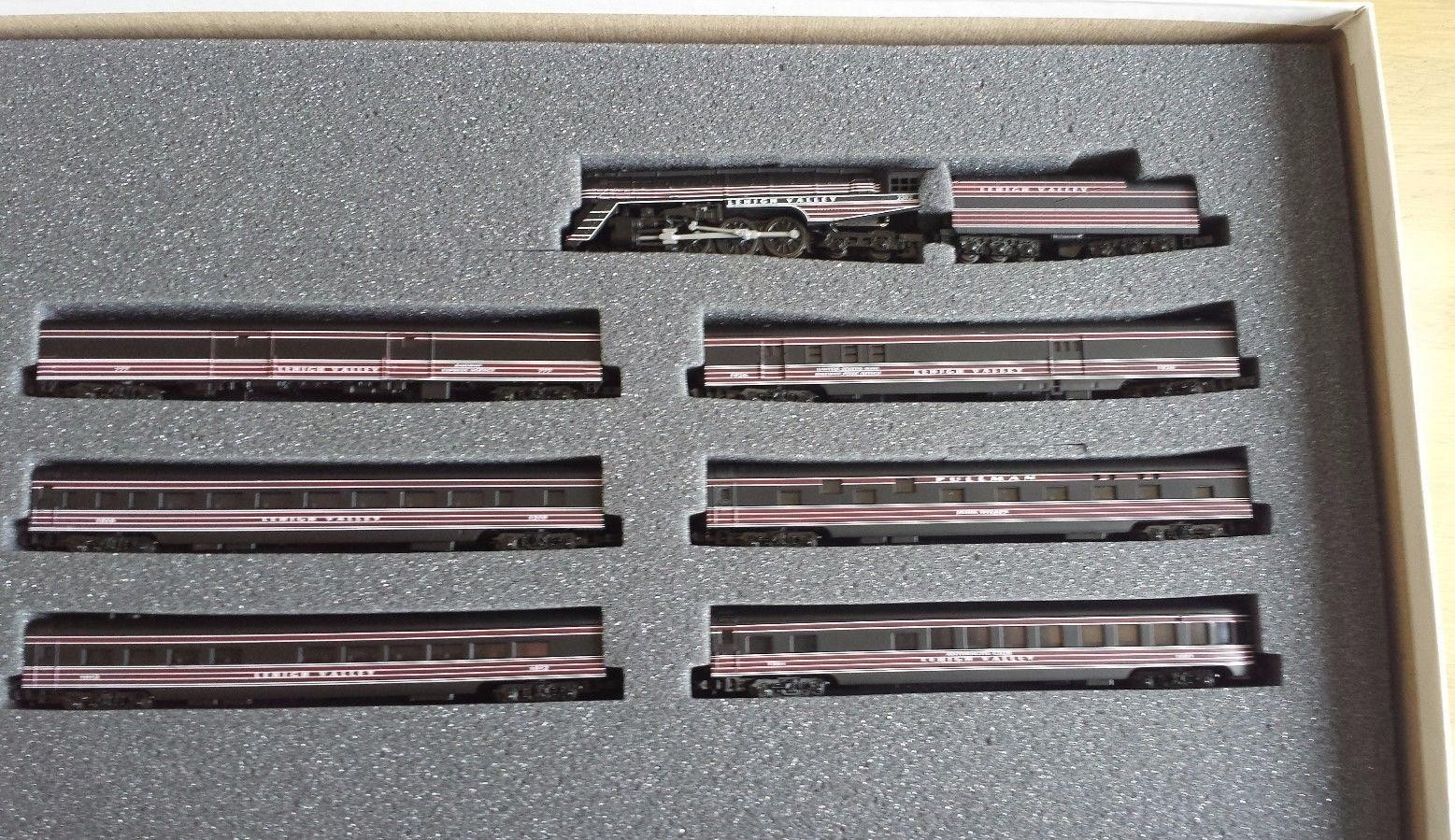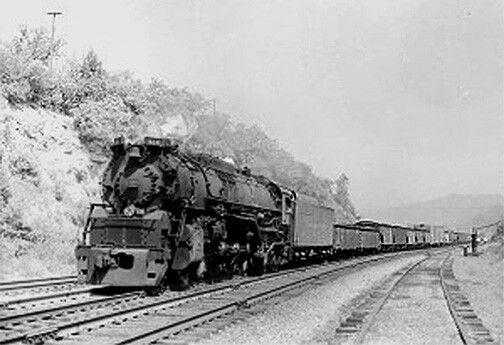Specific Item Information: Limited Edition Set #21 "Merchandise Service " Add-On set: 12 boxcars.
Add-on set to Limited Edition Set #20 (#8505), with different road numbers.
- (2) REA (Railway Express Agency) Pennsylvania Boxcars #2141, #2187
- (10) Pennsylvania Boxcars 'Merchandise Service': #30901, #30920, #90835, #90932, #91329, #91431, #91438, #92278, #92343, #92361
As a number of original buyers purchased both the basic and the add-on set and then mixed up the cars between the two sets, the original composition of each set could not be determined with certainty.
Below are the additional (and different) numbers that we think belong to the basic set:
- (2) REA (Railway Express Agency) Pennsylvania Boxcars: #2117, #2185
- (10) Pennsylvania Boxcars 'Merchandise Service': #30902, #30927, #92425, #92427, #92469, #92473, #92479, #92480, #92484, #92498
Add-on set to Limited Edition Set #20 (#8505), with different road numbers.
- (2) REA (Railway Express Agency) Pennsylvania Boxcars #2141, #2187
- (10) Pennsylvania Boxcars 'Merchandise Service': #30901, #30920, #90835, #90932, #91329, #91431, #91438, #92278, #92343, #92361
As a number of original buyers purchased both the basic and the add-on set and then mixed up the cars between the two sets, the original composition of each set could not be determined with certainty.
Below are the additional (and different) numbers that we think belong to the basic set:
- (2) REA (Railway Express Agency) Pennsylvania Boxcars: #2117, #2185
- (10) Pennsylvania Boxcars 'Merchandise Service': #30902, #30927, #92425, #92427, #92469, #92473, #92479, #92480, #92484, #92498
Series Information: Con-Cor "Limited Edition Sets" or "Limited Edition Collector's Sets" were started after requests to 'custom paint' replicas of great passenger trains of the past. As these sets were very limited in quantity, many were sold out before they got to the retailer. While the quality of painting varied from time to time, they are a handsome addition to any collection and impressive on a layout.
With the exception of the first set, all were furnished in a wood-grained cardboard box with colored foam storage insert. For some sets, the manufacturer furnished additional cars or add-on sets.
The number of the set in the series is not printed on the box, but a listing was kept by Con-Cor and available as print-out in the most recent sets or on the (former) Con-Cor website.
Sets #1 to #13 were without stock number; stock numbers have been assigned and printed on the side label starting with set #14.
The wood-grained cardboard box has been used for other sets called "Special Edition Set" by Con-Cor, that only received a regular stock number, but were not accounted in the "Limited Edition Set" collection.
With the exception of the first set, all were furnished in a wood-grained cardboard box with colored foam storage insert. For some sets, the manufacturer furnished additional cars or add-on sets.
The number of the set in the series is not printed on the box, but a listing was kept by Con-Cor and available as print-out in the most recent sets or on the (former) Con-Cor website.
Sets #1 to #13 were without stock number; stock numbers have been assigned and printed on the side label starting with set #14.
The wood-grained cardboard box has been used for other sets called "Special Edition Set" by Con-Cor, that only received a regular stock number, but were not accounted in the "Limited Edition Set" collection.
Prototype History: A mixed freight train is a train that hauls a variety of different freight cars or wagons. A mixed freight depends on the locale and industries. The train will be carrying cars to be brought to a yard where a local will bring them to the various industries. The location determines the industries, and the industries determine the cars.
Which cars are in which trains is determined by the waybills they are assigned - which is close to a totally random process. For example, through freights simply run from up staging to down staging and back, stopping long enough to trade out 30 percent of their cars and change from steam to motor (catenary) or vice-versa. Thus freights will have a variety of cars, changing each time they pass through a switching yard.
Which cars are in which trains is determined by the waybills they are assigned - which is close to a totally random process. For example, through freights simply run from up staging to down staging and back, stopping long enough to trade out 30 percent of their cars and change from steam to motor (catenary) or vice-versa. Thus freights will have a variety of cars, changing each time they pass through a switching yard.
Road Name History: The Pennsylvania Railroad (reporting mark PRR) was an American Class I railroad, founded in 1846. Commonly referred to as the "Pennsy," the PRR was headquartered in Philadelphia, Pennsylvania.
The PRR was the largest railroad by traffic and revenue in the U.S. for the first half of the twentieth century. Over the years, it acquired, merged with or owned part of at least 800 other rail lines and companies. At the end of 1925, it operated 10,515 miles of rail line; in the 1920s, it carried nearly three times the traffic as other railroads of comparable length, such as the Union Pacific or Atchison, Topeka & Santa Fe railroads. Its only formidable rival was the New York Central (NYC), which carried around three-quarters of PRR's ton-miles.
At one time, the PRR was the largest publicly traded corporation in the world, with a budget larger than that of the U.S. government and a workforce of about 250,000 people. The corporation still holds the record for the longest continuous dividend history: it paid out annual dividends to shareholders for more than 100 years in a row.
In 1968, PRR merged with rival NYC to form the Penn Central Transportation Company, which filed for bankruptcy within two years. The viable parts were transferred in 1976 to Conrail, which was itself broken up in 1999, with 58 percent of the system going to the Norfolk Southern Railway (NS), including nearly all of the former PRR. Amtrak received the electrified segment east of Harrisburg.
The PRR was the largest railroad by traffic and revenue in the U.S. for the first half of the twentieth century. Over the years, it acquired, merged with or owned part of at least 800 other rail lines and companies. At the end of 1925, it operated 10,515 miles of rail line; in the 1920s, it carried nearly three times the traffic as other railroads of comparable length, such as the Union Pacific or Atchison, Topeka & Santa Fe railroads. Its only formidable rival was the New York Central (NYC), which carried around three-quarters of PRR's ton-miles.
At one time, the PRR was the largest publicly traded corporation in the world, with a budget larger than that of the U.S. government and a workforce of about 250,000 people. The corporation still holds the record for the longest continuous dividend history: it paid out annual dividends to shareholders for more than 100 years in a row.
In 1968, PRR merged with rival NYC to form the Penn Central Transportation Company, which filed for bankruptcy within two years. The viable parts were transferred in 1976 to Conrail, which was itself broken up in 1999, with 58 percent of the system going to the Norfolk Southern Railway (NS), including nearly all of the former PRR. Amtrak received the electrified segment east of Harrisburg.
Brand/Importer Information: Con-Cor has been in business since 1962. Many things have changed over time as originally they were a complete manufacturing operation in the USA and at one time had upwards of 45 employees. They not only designed the models,but they also built their own molds, did injection molding, painting, printing and packaging on their models.
Currently, most of their manufacturing has been moved overseas and now they import 90% of their products as totally finished goods, or in finished components. They only do some incidental manufacturing today within the USA.
Important Note: The Con-Cor product numbering can be very confusing. Please see here in the article how to properly enter Con-Cor stock numbers in the TroveStar database.
Currently, most of their manufacturing has been moved overseas and now they import 90% of their products as totally finished goods, or in finished components. They only do some incidental manufacturing today within the USA.
Important Note: The Con-Cor product numbering can be very confusing. Please see here in the article how to properly enter Con-Cor stock numbers in the TroveStar database.
Item created by: Alain LM on 2019-05-12 14:40:32. Last edited by Alain LM on 2024-05-03 13:38:20
If you see errors or missing data in this entry, please feel free to log in and edit it. Anyone with a Gmail account can log in instantly.
If you see errors or missing data in this entry, please feel free to log in and edit it. Anyone with a Gmail account can log in instantly.


